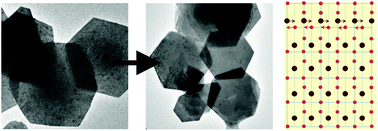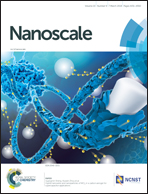Insights into the formation mechanism of two-dimensional lead halide nanostructures†
Abstract
We present a colloidal synthesis strategy for lead halide nanosheets with a thickness of far below 100 nm. Due to the layered structure and the synthesis parameters the crystals of PbI2 are initially composed of many polytypes. We propose a mechanism which gives insight into the chemical process of the PbI2 formation. Further, we found that the crystal structure changes with increasing reaction temperature or by performing the synthesis for longer time periods changing for the final 2H structure. In addition, we demonstrate a route to prepare nanosheets of lead bromide as well as lead chloride in a similar way. Lead halides can be used as a detector material for high-energy photons including gamma and X-rays.



 Please wait while we load your content...
Please wait while we load your content...